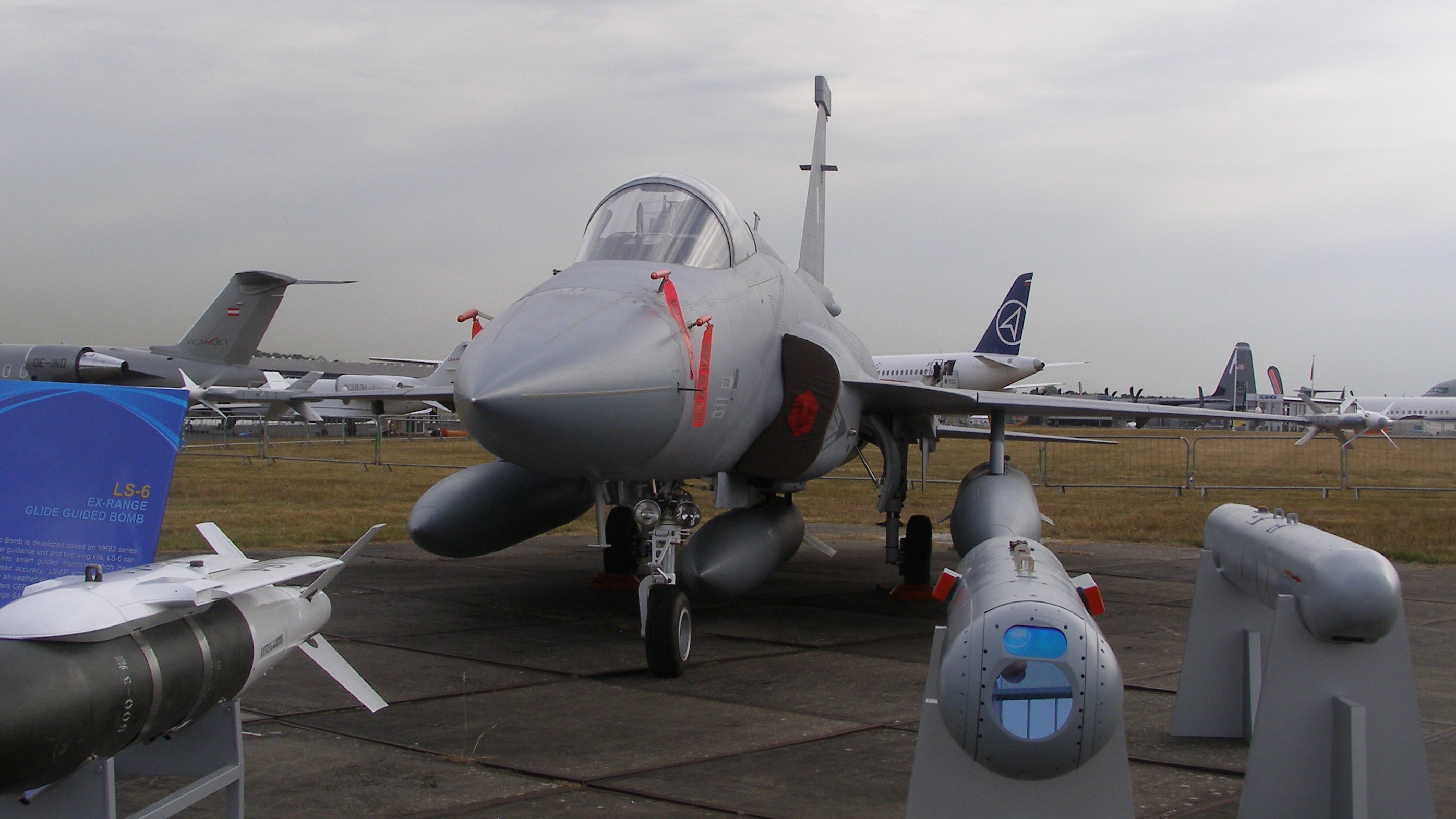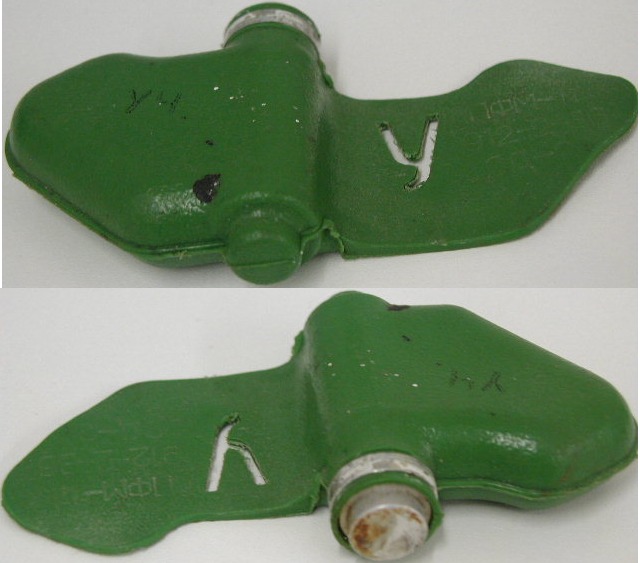|
KMGU
KMGU (Russian: ''Контейнер малогабаритных грузов унифицированный, Unified Container for Small-sized Load)'' is a Soviet munitions dispenser similar to the British JP233 and the German MW-1. It can be carried by most Soviet and Russian attack aircraft, including the MiG-23, the MiG-27, the MiG-29, the Su-22, the Su-24, the Su-25, the Su-27, the Su-30, and the Su-34 and the Mi-24, Ka-50 and the Ka-52 attack helicopter. The cylindrical aluminum fuselage is divided into 8 sections, each has its own pneumatically opened doors. It can be filled with: * 96 (8×12) ''AO-2,5RT'' 2.5 kilogram-mass high explosive mines * 96 (8×12) ''PTM-1'' anti-tank mines * 156 ''PFM-1S'' mines KMGU-2 is an advanced version of the system. The Convention on Certain Conventional Weapons restricts the use of such weapon systems. Users * *{{Flag, Russian Federation See also * JP233 * MW-1 The MW-1'' (Mehrzweckwaffe 1'', multipurpose weapon) is a German munitio ... [...More Info...] [...Related Items...] OR: [Wikipedia] [Google] [Baidu] |
Su-22
The Sukhoi Su-17 (''izdeliye'' S-32) is a variable-sweep wing fighter-bomber developed for the Soviet military. Its NATO reporting name is "Fitter". Developed from the Sukhoi Su-7, the Su-17 was the first variable-sweep wing aircraft to enter Soviet service. Two subsequent Sukhoi aircraft, the Su-20 and Su-22, have usually been regarded as variants of the Su-17. The Su-17/20/22 series has had a long career and has been operated by many other air forces of including the Russian Federation, other former Soviet republics, the former Warsaw Pact, countries in the Arab world, Angola and Peru. Development Shortly after the Su-7 fighter-bomber was put into service, the Sukhoi Design Bureau was ordered to develop a deep modernization program for the aircraft in the early 1960s. The program would be aimed primarily at updating on-board avionics and the takeoff/landing performance characteristics. The concept of variable-geometry wings - something gaining wider attention at that time ... [...More Info...] [...Related Items...] OR: [Wikipedia] [Google] [Baidu] |
MW-1
The MW-1'' (Mehrzweckwaffe 1'', multipurpose weapon) is a German munitions dispenser similar to the British JP233. It is designed to be carried on the Tornado IDS, although it can be carried on the F-104 Starfighter and the F-4 Phantom. The MW-1 started to be phased out after the German Government ratified the Convention on Cluster Munitions in 2009. Submunitions The MW-1 was designed so that different types of submunitions may be loaded into its 112 tubes. The MIFF, MUSA and MUSPA mines are parachute dropped, and upon reaching the ground self-right and arm. The mines are blast-resistant and are reported to self-destruct within less than forty days from deployment. KB 44 ''(Kleinbombe 44)'': Bomblets for use against unarmored and light armored targets such as vehicles and airplanes, etc. STABO ''(Startbahnbombe)'': Bomb to destroy runways. The first shaped charge explodes on impact, creating a channel under the surface. An additional charge creates an explosion under the con ... [...More Info...] [...Related Items...] OR: [Wikipedia] [Google] [Baidu] |
JP233
Originally known as the LAAAS (Low-Altitude Airfield Attack System), the JP233 is a British submunition delivery system consisting of large dispenser pods carrying several hundred submunitions designed to attack runways. Design and development Development of the system began in 1977 as a 50/50 cooperative program between Hunting Engineering (now known as INSYS) of the UK and the US Air Force. The USAF intended to use the weapon with its FB-111 strike aircraft; however, in 1982 rising costs led them to pull out of the programme, and the British completed development on their own for potential use with the Tornado, Jaguar and Harrier. The dispensers could be carried on wing pylons: short-finned containers for bomblets, or medium-length finned containers for mines. The F-111 was capable of carrying a pair of each type, but the Jaguar and Harrier would be able to carry only a single pair of either type. The Tornado could be fitted with a pair of much larger pods on the shoulder pylo ... [...More Info...] [...Related Items...] OR: [Wikipedia] [Google] [Baidu] |
Czech Air Force
"The air is our sea" , colours = , colours_label = , march = , mascot = , anniversaries = , equipment = , equipment_label = , battles = , decorations = , battle_honours = , battle_honours_label = , flying_hours = , website = , commander1 = Brigade General Petr Čepelka , commander1_label = Air Force Commander , notable_commanders = , identification_symbol = , identification_symbol_label = Roundel , identification_symbol_2 = , identification_symbol_2_label = Flag , aircraft_attack = L-159A , aircraft_bomber = , aircraft_electronic = F-35 on order , aircraft_fighter = JAS 39 Gripen, F-35A on order , aircraft_helicopter = Mi-8, Mi-17, W-3A, Mi-24, UH-1Y Venom on order , aircraft_helicopter_attack = AH-1Z Viper on order , aircraft_helicopter_cargo = , aircraft_helicopter_multirole = , aircraft_helicopter_observation = , aircraft_helicopter_trainer = , aircraft_helicopter_utility = , aircraft_interceptor = , aircraft_pa ... [...More Info...] [...Related Items...] OR: [Wikipedia] [Google] [Baidu] |
Su-34
The Sukhoi Su-34 (russian: Сухой Су-34; NATO reporting name: Fullback) is a Soviet-origin Russian twin-engine, twin-seat, all-weather supersonic medium-range fighter-bomber/strike aircraft. It first flew in 1990, intended for the Soviet Air Forces, and it entered service in 2014 with the Russian Air Force. Based on the Sukhoi Su-27 Flanker air superiority fighter, the Su-34 has an armoured cockpit with side-by-side seating for its two pilots. The Su-34 is designed primarily for tactical deployment against ground and naval targets (tactical bombing/ attack/interdiction roles, including against small and mobile targets) on solo and group missions in daytime and at night, under favourable and adverse weather conditions and in a hostile environment with counter-fire and electronic warfare (EW) counter-measures deployed, as well as for aerial reconnaissance. The Su-34 is planned to eventually replace the Su-24 tactical strike fighter and the Tu-22M long-distance bomber. De ... [...More Info...] [...Related Items...] OR: [Wikipedia] [Google] [Baidu] |
LS PGB
LS is an abbreviation for a family of Chinese built precision-guided munitions (PGM) named Thunder Stone Precision Guided Bomb (, Léi-shí Jīngquè Zhì-dǎo Zhàdàn) developed by Luoyang Electro-Optics Technology Development Centre (EOTDC), a subsidiary of China Aerospace Science and Technology Corporation (CASC). Alternatively, the LS PGB is also referred to by its gliding capability, as Thunder Stone Gliding Guided Bomb ( Léi-shí Huáxiáng Zhì-dǎo Zhàdàn), or LS GGB. The guidance design of LS PGB is also adopted for another family of Chinese PGM, the YZ series, such as YZ-102 series. These PGMs are referred to in China as precision guided bombs (PGB). LS PGB LS PGB is actually an upgrade kit to modernize gravity bombs with precision / laser guidance, with the kit consisted of two modules, the guidance module and the gliding module. The guidance of the weapon is based on two other Chinese PGM, the FT PGB and LT PGB, with the former providing the inertial/sate ... [...More Info...] [...Related Items...] OR: [Wikipedia] [Google] [Baidu] |
Convention On Certain Conventional Weapons
The United Nations Convention on Certain Conventional Weapons (CCW or CCWC), concluded at Geneva on October 10, 1980, and entered into force in December 1983, seeks to prohibit or restrict the use of certain conventional weapons which are considered excessively injurious or whose effects are indiscriminate. The full title is Convention on Prohibitions or Restrictions on the Use of Certain Conventional Weapons Which May Be Deemed to Be Excessively Injurious or to Have Indiscriminate Effects. The convention covers land mines, booby traps, incendiary devices, blinding laser weapons and clearance of explosive remnants of war. Objectives The aim of the Convention and its Protocols is to provide new rules for the protection of civilians from injury by weapons that are used in armed conflicts and also to protect combatants from unnecessary suffering. The convention covers fragments that are undetectable in the human body by X-rays, landmines and booby traps, and incendiary weapons, ... [...More Info...] [...Related Items...] OR: [Wikipedia] [Google] [Baidu] |
PFM-1
PFM-1 () is a scatterable high explosive anti-personnel land mine of Soviet and Russian production. It is also known as a Green Parrot or Butterfly Mine. The mines can be deployed from mortars, helicopters and aeroplanes in large numbers; they glide to the ground without exploding and will explode later upon contact. Design The mine consists of a polyethylene plastic container containing 40 g of explosive liquid. The two wings of the PFM-1 allow it to glide after being released in the air, then spin, stabilising it and slowing its descent. The thick wing contains the liquid explosive. The two wings together are 120 mm (about 5 inches) long. The plastic body can be moulded in a variety of colours for best camouflage. As existing stocks were in European green rather than sand coloured, the first examples used in 1980s Afghanistan were green and easily visible. This led to their name 'green parrots'. The shape and bright colour is attractive to children, inspiring claims that t ... [...More Info...] [...Related Items...] OR: [Wikipedia] [Google] [Baidu] |
Aluminum
Aluminium (aluminum in American and Canadian English) is a chemical element with the symbol Al and atomic number 13. Aluminium has a density lower than those of other common metals, at approximately one third that of steel. It has a great affinity towards oxygen, and forms a protective layer of oxide on the surface when exposed to air. Aluminium visually resembles silver, both in its color and in its great ability to reflect light. It is soft, non-magnetic and ductile. It has one stable isotope, 27Al; this isotope is very common, making aluminium the twelfth most common element in the Universe. The radioactivity of 26Al is used in radiodating. Chemically, aluminium is a post-transition metal in the boron group; as is common for the group, aluminium forms compounds primarily in the +3 oxidation state. The aluminium cation Al3+ is small and highly charged; as such, it is polarizing, and bonds aluminium forms tend towards covalency. The strong affinity towards ox ... [...More Info...] [...Related Items...] OR: [Wikipedia] [Google] [Baidu] |




